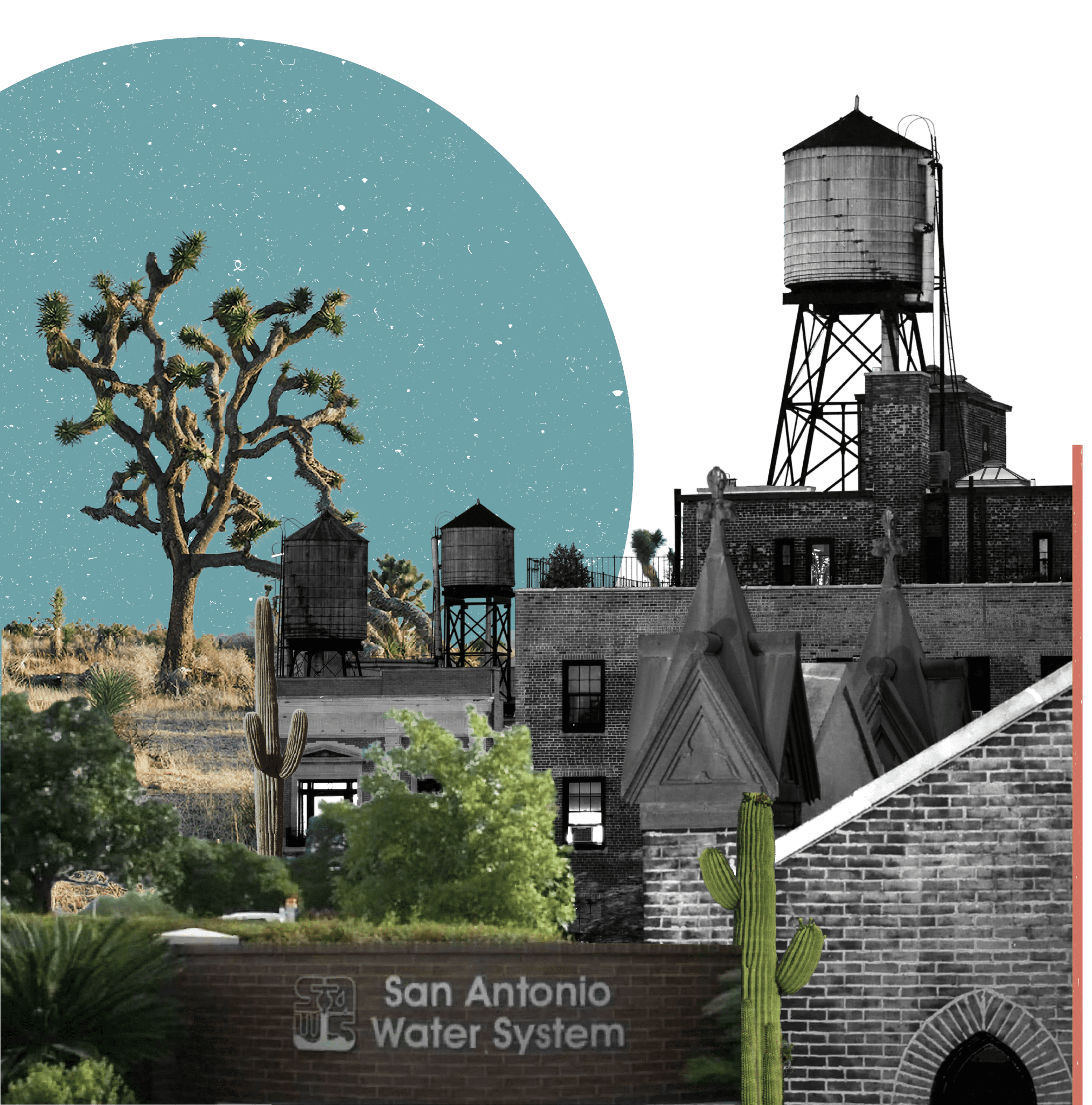Saving Water through
Resilient Gardening
According to the US Drought Monitor, San Antonio, Texas, is “abnormally dry.” 1 The city experiences high temperatures and long dry spells, but also the occasional heavy downpour that can see months’ worth of rain drench the city in a matter of hours.
In this erratic climate, water conservation has become a matter of urgency.
The existing response to dry weather and drought was threatening the long-term economic prospects of San Antonio. Businesses that had planned to set up in the region threatened to pull out, believing it was no longer a safe and productive place of work. The city was getting a reputation for being a poor steward of its water.
Things came to a head when the US Fish and Wildlife Service demanded San Antonio become less dependent on the Edwards Aquifer for its local water supply to ensure habitat conservation and the continued reliability of the water source. This had been the city’s primary water supply through heavy rainfall and during drought.
Without the Edwards Aquifer offering a reliable water supply, San Antonio was at greater risk of experiencing frequent water shortages. This led to concerns from local residents about how the water limitations would impact their access to clean water for everyday needs.

The city government was forced to devise a solution to protect San Antonio residents during months of drought, with particular consideration for low-income individuals who would experience heightened impacts.
It decided to promote greater sustainability through proactive initiatives that would help residents save water while getting involved in urban horticulture. This encouraged safe, reliable produce options; increased engagement with the natural world; and put support in place so low-income residents would not struggle to meet the rising costs of water.
Not all US cities struggling with drought will have an aquifer as a primary water source. However, with the growing threat of a warming climate and more frequent bouts of drought, cities can become more aware of the impacts of drought on water supply, and the importance of water conservation and water-resource diversification as a resilience-building measure.


Water-Saving Programs Designed for People
San Antonio Water System (SAWS) set an ambitious target: to proactively secure one billion gallons of water annually. To do this, it needed to work with the community to encourage residents to save water through various educational, rebate, and financial-support programs.
Working with the Conservation Department and nonprofits such as Bexar County Master Gardeners, San Antonio Water Systems launched a rebate program that included 2
- a WaterSaver irrigation rebate and consultation;
- a WaterSaver landscape coupon;
- a WaterSaver patioscape coupon;
- a swimming pool rebate; and
- a water-flow-sensor rebate.
To participate in the irrigation, swimming pool, or water-flow-sensor rebate program, homeowners followed a simple process that involves a property inspection by a SAWS representative to determine whether a rebate is available, and hired contractors to carry out the work.
The rebate provides the financial support necessary for low-income households to participate in the water-conservation initiatives, which would otherwise be an economic barrier for these groups. The rebate program gives San Antonio residents the ability to implement sustainability measures in their homes to ensure future water supply, even during times of severe shortage.

Along with the rebates, SAWS offers a coupon program that helps homeowners create beautiful gardens using plants that are drought resistant. To apply for a WaterSaver landscape coupon, homeowners must commit to removing grass from their gardens and replacing it with a water-saving landscape. The coupons incentivize homeowners to take action to save water and support local horticultural businesses.
The rebate program is funded through water bills paid by city residents. SAWS structured its rates so that a portion of the top-tier water bills goes into a restricted water-conservation fund. This means that those businesses and residents who use the most water are responsible for funding citywide long-term water-saving efforts.
However, as prices continued to rise with extended drought periods, the city’s lowest-income families simply couldn’t afford the rising cost of water. To help those struggling families, SAWS implemented an affordability discount that ranges between $2 to $20, depending on where a household sits on the federal poverty scale. Today, thirty-four thousand households qualify for the discount, which is paid for by the water-conservation fund.
The decision to implement the discount and the rebate system means that no household is excluded from taking steps toward improved water sustainability.
Despite the 2020 COVID-19 restrictions, San Antonio was still able to achieve incredible results with its program, including
- 2,774 no-contact irrigation consultations;
- 120,748 people engaging with educational resources; and
- 1,554 coupons used.
As a result of the combined programs, the city saved 1.7 billion gallons of water in 2020—well above its target.
A City of Gardeners
Fundamental to SAWS’ approach is empowering people to plant gardens that can save water, while promoting urban horticulture. Homeowners can receive training in how to create a resilient garden that doesn’t require watering.
SAWS works in partnership with the Bexar County Master Gardeners, a nonprofit dedicated to educating people about urban horticulture. Alongside decorative plants, the Bexar County Master Gardeners support homeowners by educating them how to properly water vegetable gardens so they do not use more water than required, promoting food sustainability.
The Master Gardeners offer training courses, workshops, a gardening library, and more. The program’s two hundred and sixty members serve a population of more than two million residents. They delivered 2,684 online continuing-education sessions throughout 2020, totaling 9,818 volunteer hours.
The Bexar County Master Gardeners recommend native and adaptive plants that don’t require significant water, and often remind participants in their workshops that this will help conserve water and allow community members to readily grow their gardens. When watering is required, they show residents how to reuse water from around the home, rather than running the tap or hose.

Since the Master Gardeners work in partnership with the rebate program, low-income residents can benefit from their support. They make sure to teach urban-horticulture skills that range from the rudimentary to the more sophisticated, to make it more accessible for everyone. Teaching people how to grow their own food sustainably can also help low-income families access fresh vegetables while saving money on their monthly utility bill.

The Bexar County Master Gardeners provide more than two hundred workshops and presentations every year. In addition to teaching people how to develop their gardens, they also offer a rewards program, in which people attending multiple educational events are given a coupon to spend on plants and tools.

